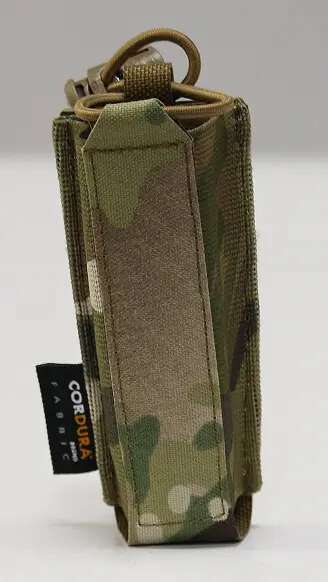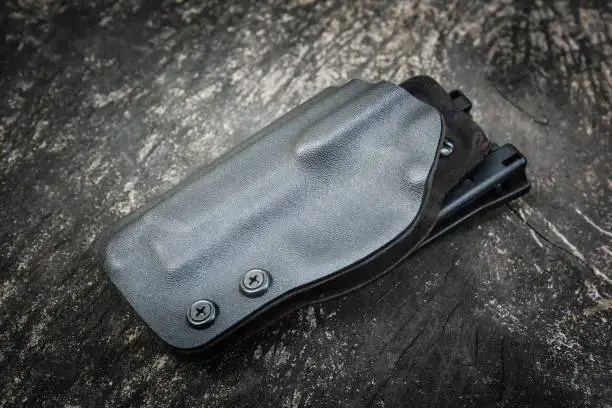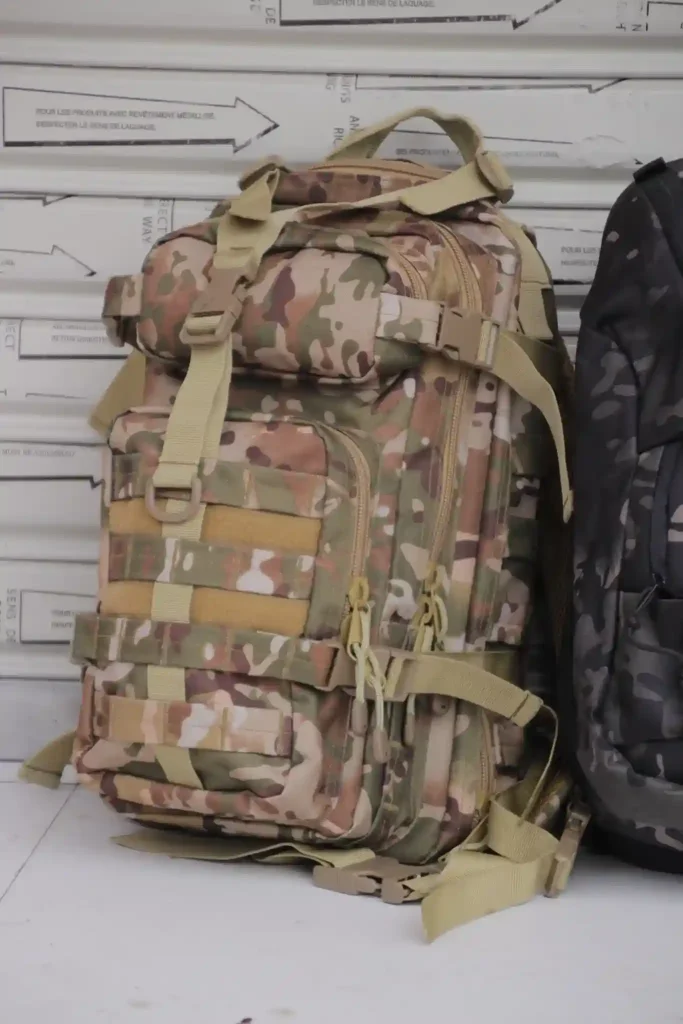When you’re out in the field, whether on a mission or an outdoor adventure, your gear needs to hold up. We all know that not all tactical gear is created equal, but what exactly makes the difference? It’s often the materials that turn an ordinary piece of gear into something you can truly rely on.
In this blog, we’ll explore 10 materials that define high-quality tactical gear. Each one plays a role in ensuring durability, functionality, and comfort.
Cordura® Nylon
Cordura® nylon is a staple in the world of tactical gear. Known for its impressive durability and resistance to abrasion, it’s often found in backpacks, vests, and pouches. This fabric can withstand rough handling, making it ideal for demanding environments. Cordura® nylon is also water-resistant, which helps protect your gear from the elements.
Cordura® comes in different weights, like 500D and 1000D, which refer to the denier count—the thickness of the yarn used. 500D Cordura® is lighter and more flexible, while 1000D offers enhanced toughness for gear that needs to resist heavy wear and tear.

Ballistic Nylon
Ballistic nylon was initially created for the military, with the specific purpose of protecting soldiers from shrapnel and bullets. Over time, its exceptional toughness made it a popular choice in tactical gear.
This material is highly resistant to tearing and punctures, which makes it ideal for items that face heavy wear and tear. The thick weave of ballistic nylon acts as a strong barrier against various hazards and offers excellent durability.
Beyond its military roots, ballistic nylon is widely used today in products like body armor carriers, where both durability and protection are key. Its ability to absorb impact and resist abrasions makes it a preferred material for gear that needs to withstand harsh conditions.
You’ll also find ballistic nylon in backpacks, tactical vests, and heavy-duty equipment cases, where long-lasting performance is essential.
Kydex®
Kydex® is a thermoplastic material used in making holsters and sheaths. What sets Kydex® apart is its ability to be molded precisely to fit specific tools or weapons.
It’s highly resistant to impact and chemicals, so your gear will remain functional even in harsh conditions. Additionally, Kydex® provides excellent retention, keeping your tools secure while still allowing for quick access.
In addition to holsters, Kydex® is also used for knife sheaths and even some firearm accessories. Its durability, combined with its lightweight nature, makes it a go-to material for gear that requires precision and toughness.
 Kydex holster for pistol
Kydex holster for pistol
Hypalon®
Hypalon® is a synthetic rubber known for its flexibility and resistance to extreme weather conditions. This material is frequently used in tactical gear that must endure exposure to sun, rain, and chemicals.
Hypalon® is also incredibly durable, making it an excellent choice for protective gear like gloves and reinforced backpack panels. Its resilience helps extend the life of tactical equipment.
Hypalon® is particularly useful in gear that will be exposed to the elements. Its resistance to UV light, ozone, and harsh chemicals means it won’t degrade easily, making it perfect for outdoor and military applications.
500D and 1000D Polyester
Polyester fabrics, particularly in 500D and 1000D weights, are frequently used in tactical gear. The “D” stands for denier, which indicates the thickness of the fabric. “D” is typically used to measure the diameter of a rope or cord, not the density or strength of a fabric like polyester.
500D polyester is often chosen for items like pouches or smaller bags where flexibility and lighter weight are desired. 1000D polyester, on the other hand, is heavier and more robust, often found in body armor carriers, larger backpacks, and other heavy-duty tactical gear.

Kevlar®
Kevlar® is synonymous with protection and is best known for its use in bulletproof vests.
This synthetic fiber is remarkably strong and lightweight, making it a key material in high-quality tactical gear.
Kevlar® is also heat-resistant, adding another layer of protection in various applications beyond body armor. Its strength is often woven into fabrics to enhance durability without significantly increasing weight. This makes it valuable in gloves, helmets, and other protective gear where both flexibility and protection are crucial.
In short, its ability to withstand high temperatures and resist cutting makes it invaluable in situations where standard materials would fail.

GORE-TEX®
GORE-TEX® revolutionized the way waterproof and breathable materials are used in tactical gear, making it a staple in items like boots, jackets, and gloves. The key benefit of GORE-TEX® is its ability to keep moisture out while allowing sweat to escape, ensuring that you stay dry and comfortable in wet conditions.
What truly sets GORE-TEX® apart is its breathability, which prevents overheating during intense activities. The material achieves this by layering GORE-TEX® membranes within fabrics, creating an effective barrier against water while still allowing air to flow. This combination makes GORE-TEX® ideal for tactical clothing, where maintaining comfort is as crucial as staying dry.
Ripstop Fabric
Ripstop fabric is crafted using a unique reinforcing technique that enhances its resistance to tearing and ripping. Despite being lightweight, this material is incredibly durable, making it a preferred choice for tactical gear like uniforms and tents.
The fabric’s distinctive crosshatch pattern helps contain damage, so if a tear does occur, it won’t spread easily. This property is invaluable for maintaining the integrity of gear in demanding situations.
You’ll often find ripstop fabric in tactical pants, jackets, and bags. Its tear-resistant ability makes it ideal for gear that might encounter sharp objects or rough terrain, offering reliable protection and peace of mind in the field.
Carbon Fiber
Carbon fiber is a high-tech material known for being both lightweight and extremely strong. While it’s not as common as other materials on this list, it’s often found in specialized tactical gear, like protective plates or custom knife handles.
Its strength-to-weight ratio makes carbon fiber exceptional, offering durability without adding bulk. Additionally, its resistance to corrosion makes it ideal for gear designed to endure harsh conditions.
In tactical applications, carbon fiber is typically reserved for high-end equipment where every ounce matters. Its corrosion resistance further ensures that the gear remains reliable and long-lasting, even in challenging environments.
Neoprene
Neoprene is a synthetic rubber known for its flexibility and durability. Originally developed in the 1930s, neoprene has found its way into many applications, including tactical gear.
One of neoprene’s standout features is its excellent thermal insulation, which helps maintain body temperature in cold environments. This makes it a favorite in cold-weather gear.
It is also highly water-resistant, and commonly used in dive suits and water-related tactical equipment.
Moreover, neoprene’s natural flexibility and cushioning properties make it great for absorbing shocks, protecting delicate equipment, and providing comfort in items like knee pads or shoulder straps.
Conclusion
In conclusion, the quality of tactical gear comes down to the materials used. From the ruggedness of Cordura® nylon to the protection of Kevlar®, each material ensures your gear performs when it matters most. Understanding these materials helps you choose gear that meets your needs. Remember, investing in high-quality tactical gear means investing in your safety and performance.
Ready to Upgrade Your Tactical Gear?
With over 15 years of experience, LQARMY (Quanzhou Litai Bags Corp. LTD.) is your trusted partner for high-quality tactical gear. Whether you’re looking for durable materials or custom solutions, we’re here to help. Contact us today to learn more about how our expertise can meet your tactical needs.


